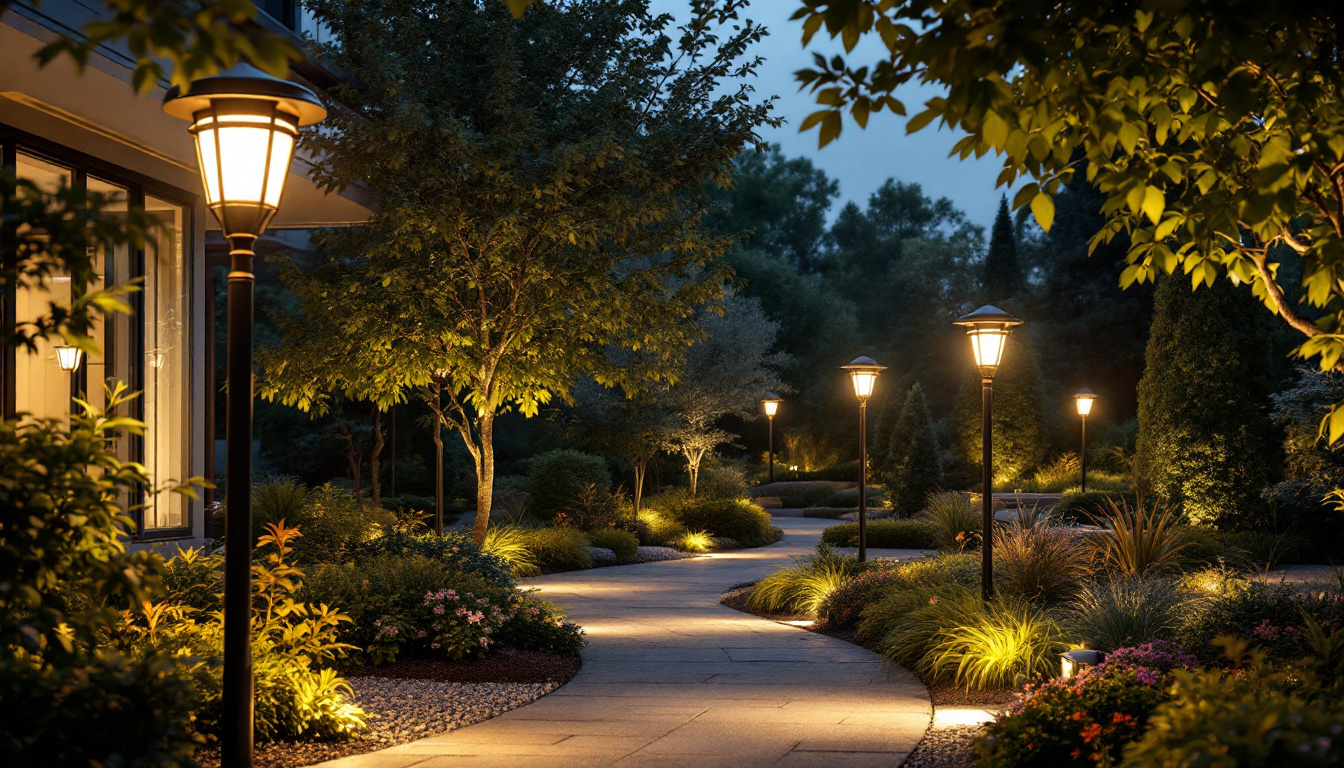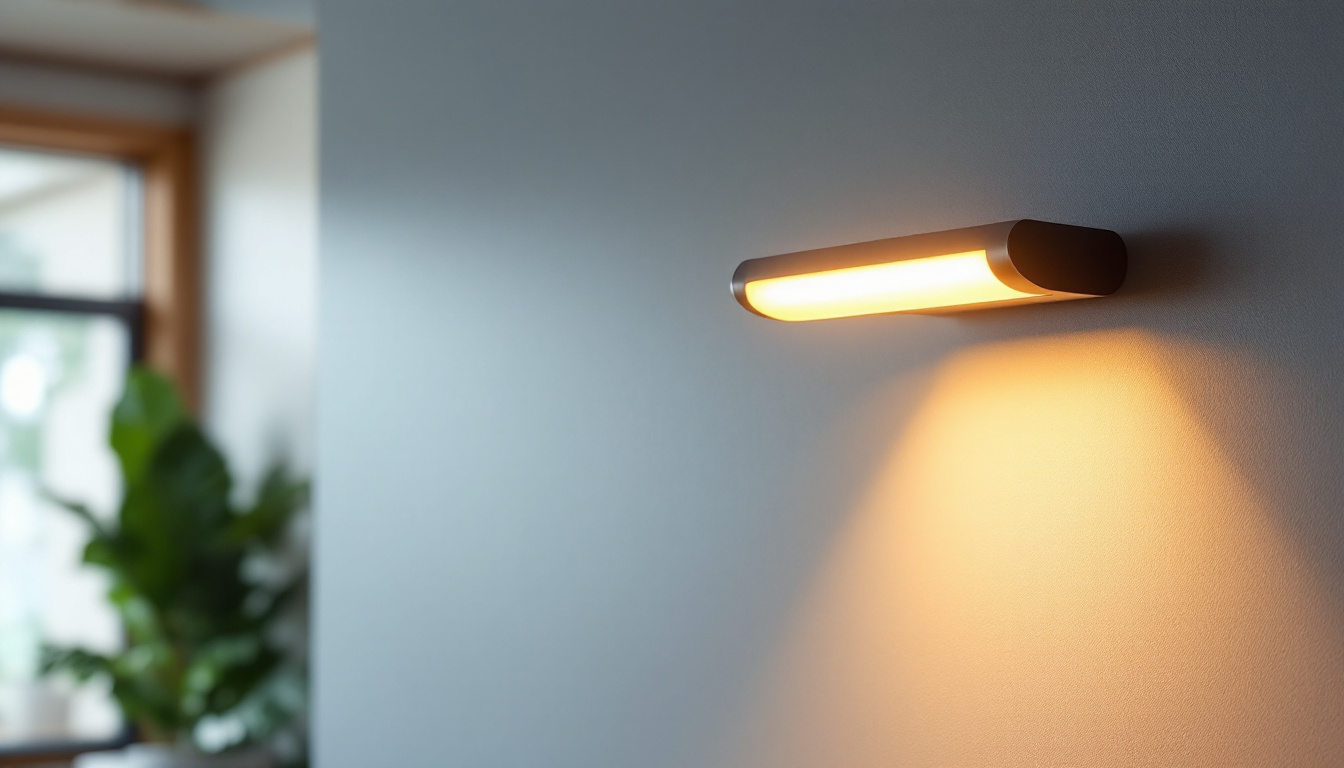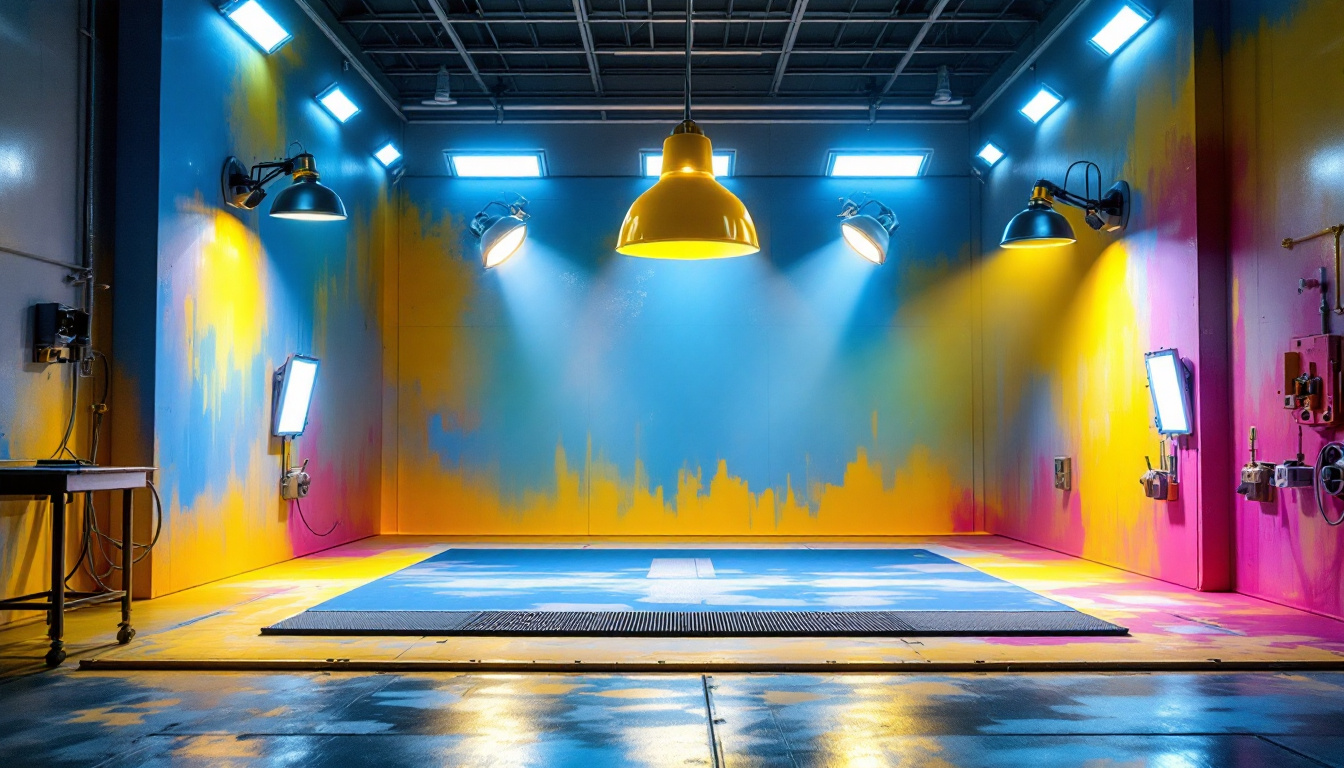
In the realm of outdoor lighting, the integration of sensor technology has transformed the way spaces are illuminated. For lighting contractors, understanding the best practices for installing and maintaining outside lights with sensors is crucial. This article delves into the various aspects of sensor lights, offering insights and guidelines that can enhance both the efficiency of installations and the satisfaction of clients.
Sensor lights are designed to automatically turn on or off based on environmental conditions, such as motion or ambient light levels. This technology not only improves convenience but also enhances security and energy efficiency. For contractors, a solid grasp of how these sensors work is essential for effective installation. Understanding the nuances of sensor technology can also help in troubleshooting and maintaining these systems, ensuring that clients receive optimal performance over time.
There are primarily two types of sensors used in outdoor lighting: motion sensors and photocells. Motion sensors detect movement within a specified range, triggering the light to activate. These are particularly useful for security purposes, as they can deter potential intruders by illuminating areas when movement is detected. Some advanced motion sensors even come equipped with adjustable sensitivity settings, allowing homeowners to customize how easily the lights are triggered, which can help minimize false alarms caused by pets or wildlife.
Photocells, on the other hand, respond to changes in ambient light. They automatically turn lights on at dusk and off at dawn, making them ideal for path lighting and decorative fixtures. Understanding the differences between these sensors helps contractors choose the right type for each specific application. Additionally, some modern photocells can be integrated with smart home systems, allowing users to control their outdoor lighting remotely or set schedules based on their daily routines, further enhancing convenience and flexibility.
Incorporating sensor lights into outdoor projects offers numerous benefits. Firstly, they significantly enhance safety by illuminating pathways and entry points when needed. This is particularly important in residential areas where homeowners value security. The presence of well-lit areas can not only prevent accidents but also create a welcoming atmosphere for guests and visitors, making homes feel more inviting.
Secondly, sensor lights contribute to energy savings. By ensuring that lights are only on when necessary, they reduce electricity consumption, which can lead to lower utility bills for clients. This aspect is especially appealing in today’s environmentally conscious market, where energy efficiency is a priority. Furthermore, many sensor lights now utilize LED technology, which not only lasts longer than traditional bulbs but also consumes significantly less power, amplifying the cost-saving benefits for homeowners. As energy regulations become stricter, integrating sensor lights can also help clients comply with local energy codes, making these installations not just a choice, but a smart investment for the future.
Proper installation of sensor lights is critical to their performance. Following best practices not only ensures functionality but also maximizes the lifespan of the fixtures. Here are some essential guidelines for lighting contractors.
Choosing the right location for sensor lights is paramount. Motion sensors should be positioned to cover high-traffic areas while minimizing false triggers caused by pets or passing vehicles. A height of 6 to 8 feet is generally recommended for optimal detection.
For photocells, placement should be away from direct light sources, such as street lamps or porch lights, to prevent them from turning off prematurely. Additionally, consider the natural landscape; trees, shrubs, and other obstructions can impact the effectiveness of both types of sensors. It’s also beneficial to assess the typical movement patterns in the area. For instance, if the sensor is intended to monitor a driveway, it should be angled to capture the approach of vehicles without being obstructed by nearby fences or landscaping.
When it comes to wiring, ensuring that connections are secure and weatherproof is essential. Use outdoor-rated cables and connectors to prevent moisture ingress, which can lead to electrical failures. Additionally, follow local electrical codes and regulations to ensure compliance and safety.
For smart sensor lights that connect to home automation systems, contractors should familiarize themselves with the specific connectivity options available. Whether using Wi-Fi, Zigbee, or Bluetooth, understanding the technology will facilitate smoother installations and better client support. Moreover, it’s important to consider the potential for future upgrades; selecting equipment that is compatible with various smart home ecosystems can provide flexibility and enhance the overall value of the installation. Additionally, educating clients about the benefits of integrating their sensor lights with other smart devices, such as security cameras or alarm systems, can lead to a more comprehensive home safety solution.
Regular maintenance is key to ensuring the longevity and effectiveness of sensor lights. As a contractor, educating clients on maintenance practices can enhance their satisfaction and prolong the life of the installation.
Over time, dirt, dust, and debris can accumulate on the sensors, impairing their functionality. Regular cleaning of the sensor lenses and light fixtures is essential. A simple wipe with a damp cloth can often suffice, but contractors should advise clients on the best cleaning products to use, avoiding harsh chemicals that could damage the fixtures.
Additionally, periodic inspections of the wiring and connections can help identify potential issues before they become significant problems. Encourage clients to report any irregularities, such as flickering lights or sensors that do not activate, as these can indicate underlying issues that need addressing.
Many sensor lights come with adjustable sensitivity and timing settings. Contractors should demonstrate how to adjust these settings to suit the specific needs of the property. For instance, in areas with heavy foot traffic, increasing sensitivity may be beneficial, while in quieter locations, a lower sensitivity setting may reduce false triggers.
Timing settings can also be adjusted to control how long the light remains on after activation. Educating clients on these features can enhance their experience and ensure that the lighting meets their expectations.
With a plethora of sensor light options available on the market, selecting the right products for each project can be daunting. However, certain criteria can guide contractors in making informed choices.
Investing in high-quality products is essential for long-lasting installations. Look for lights that are rated for outdoor use and have robust weatherproofing features. Materials such as aluminum or high-grade plastic can withstand the elements better than cheaper alternatives.
Additionally, consider the warranty offered by manufacturers. A longer warranty period often indicates a commitment to quality and can provide peace of mind for both contractors and clients.
As energy efficiency becomes increasingly important, selecting products with high efficiency ratings can enhance the appeal of installations. Look for lights with LED technology, which not only consume less energy but also have a longer lifespan compared to traditional incandescent bulbs.
Energy Star-rated products are a good benchmark, as they meet strict efficiency guidelines set by the Environmental Protection Agency. Promoting these products can also attract environmentally conscious clients.
Effective communication with clients is vital throughout the installation process. Educating them about the benefits and functionalities of sensor lights can foster trust and satisfaction.
Whenever possible, contractors should demonstrate the features of sensor lights during the installation process. Show clients how to adjust settings, clean the fixtures, and troubleshoot common issues. This hands-on approach can empower clients and enhance their overall experience.
Providing clear, written instructions can also be beneficial. A simple guide outlining maintenance tips and operational features can serve as a helpful reference for clients after the installation is complete.
Clients may have concerns about the effectiveness of sensor lights, particularly regarding false triggers or sensitivity issues. It is essential to listen to these concerns and address them proactively. Offering solutions, such as adjusting settings or relocating sensors, can help alleviate any apprehensions.
Additionally, encourage clients to reach out with any questions or issues that arise after installation. Establishing a line of communication can foster a positive relationship and lead to potential referrals in the future.
The landscape of outdoor lighting is continually evolving, with new technologies and trends emerging regularly. Staying informed about these developments can position contractors as leaders in the field.
As smart home technology becomes more prevalent, the integration of outdoor sensor lights with home automation systems is on the rise. Many homeowners are looking for seamless control over their lighting through smartphone apps or voice-activated devices.
Contractors should familiarize themselves with the latest smart lighting options and their compatibility with various home automation systems. Offering these solutions can enhance the value of installations and cater to the growing demand for smart home features.
With increasing concerns about home security, outdoor sensor lights are evolving to include advanced security features. Some models now come equipped with cameras, alarms, and even two-way communication systems, allowing homeowners to monitor their property remotely.
Contractors should keep an eye on these advancements and consider how they can incorporate such features into their offerings. Providing clients with state-of-the-art security solutions can set a contractor apart in a competitive market.
Outdoor lights with sensors offer numerous benefits, from enhanced security to energy efficiency. For lighting contractors, understanding the intricacies of sensor technology, installation best practices, maintenance considerations, and emerging trends is essential for delivering high-quality services.
By prioritizing education, communication, and product quality, contractors can ensure that their clients are not only satisfied but also informed about the advantages of their outdoor lighting systems. As technology continues to evolve, staying ahead of trends will further position contractors as trusted experts in the field.
Incorporating these best practices into daily operations can lead to successful installations and satisfied clients, ultimately fostering long-term relationships and a thriving business.
Ready to elevate your lighting installations with the latest sensor technology? At LumenWholesale, we provide lighting contractors like you with the highest quality, spec-grade lighting products at prices that can’t be beaten. Say goodbye to local distributor markups and hello to a vast selection of reliable, high-performance lighting that meets the most stringent industry standards. With the convenience of free shipping on bulk orders, you can stock up on premium lighting solutions and pass the savings on to your clients. Don’t compromise on quality or value—visit LumenWholesale for Wholesale Lighting at the Best Value and start transforming your outdoor lighting projects today.

Discover how partnering with a lighting contractor can illuminate new opportunities for your business.

Explore the rising significance of outdoor flood lamps in the lighting industry.

Discover the benefits of T8 light fixtures in this comprehensive guide, exploring their role in energy-efficient lighting solutions for homes and businesses.

Discover why paint booth lights are indispensable tools for lighting contractors.